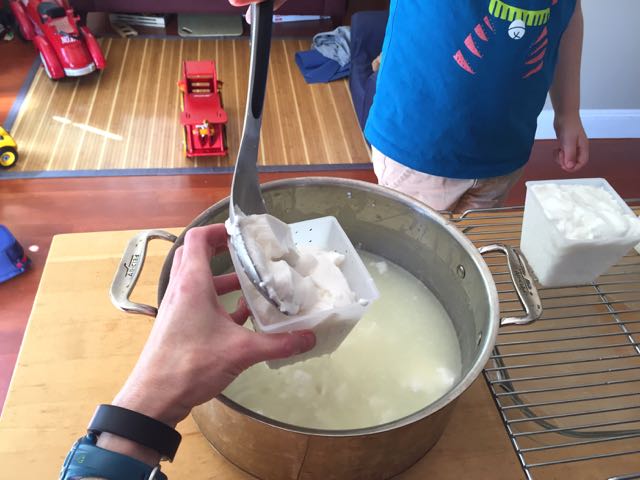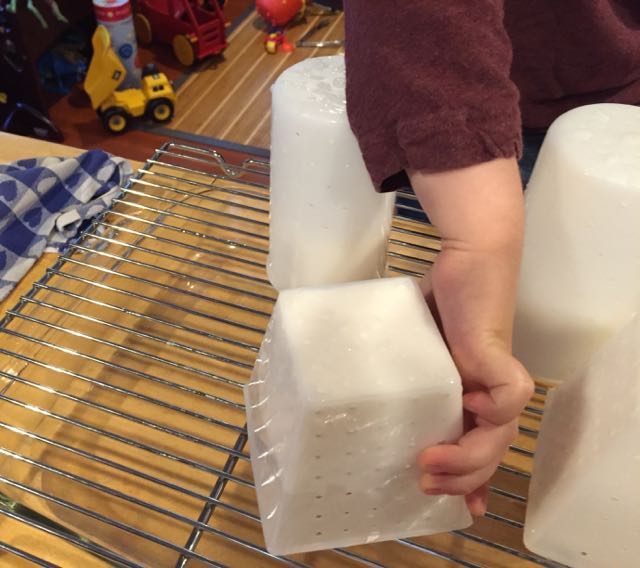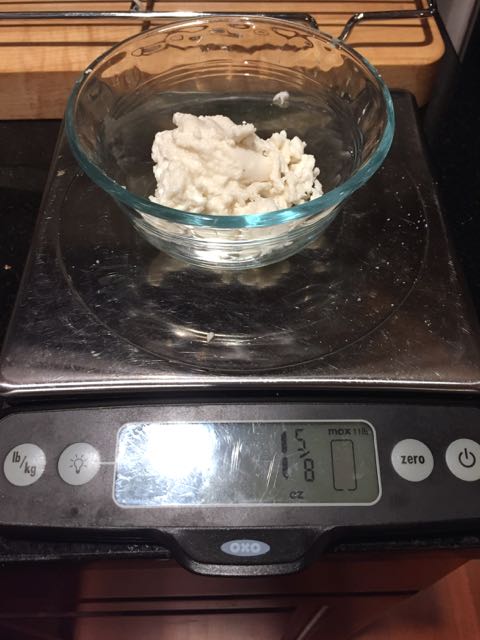More Feta Fun: Creamy Feta
"Oops. Mom. I smushed that little part off. But it was by accident, and it's only a small piece. So it's okay, right? And I can probably eat it, now, right?"
Did you know there was such a thing as creamy feta? I didn't. According to David Asher in Chapter 15 of The Art of Natural Cheesemaking, creamy feta is a softer version of feta, made using a lactic curd, like a chèvre, instead of the firmer full-rennet curd that we made last week. Creamy feta is commonly called Bulgarian feta but is now labeled as Bulgarian white cheese because of the Protected Designation of Origin (PDO) protecting the name feta. If the controversy surrounding feta interests you, you can read more about the "feta wars" here. Because "Bulgarian white cheese" is at best an utterly uninspiring name, I'll refer to what we made as "creamy feta."
Making creamy feta was a pretty leisurely experience. The recipe said it would take about an hour over three days to make, and that would have been about right if I hadn't had any help. For us, it probably took closer to 90 minutes or so over four days, which was very doable.
Here's what we did:







Like our first feta, we made some active kefir culture, and strained it. We heated the raw goat's milk, added the culture and a very tiny dose of rennet dissolved in water. Then we let the covered pot sit out on the counter for a day.






On the second day, we filled our forms with the curds that had formed. Unfortunately, I did not have enough of the proper size and shape forms for this recipe, so we used two crottin forms and two Valençay forms. I'm sure we broke a variety of rules by making feta in the shape of a pyramid, but because I have no idea what those rules are, I'm not too worried about it. We mixed a 7% brine. As the cheeses drained, we flipped them once.




On the third day, we salted the cheeses and let them dry, and we attempted a whey ricotta. The yield was very small and the flavor was very strong. The ricotta was also much wetter than our previous whey ricotta. We preferred the whey ricotta from the firm feta over the one from this recipe.
On the fourth day, we put the cheese in the brine. Unlike our firm feta, this cheese seems to want to float. The recipe says if that happens, to weigh it down. Wyatt managed to wedge a couple of pieces of cheese into the jar in such a way that they are holding each other under the brine. I have no idea what he did, but I hope it holds because I wasn't able to find something in our kitchen to use as a cheese weight.
Now we must wait two weeks for the cheese to age. We're looking forward to tasting the two fetas side-by-side to see whether there's one we prefer.

